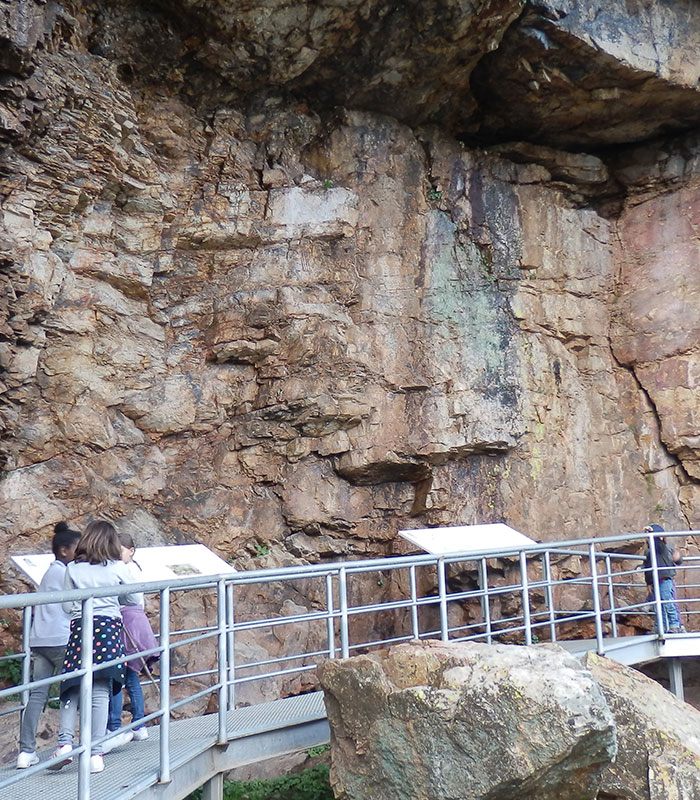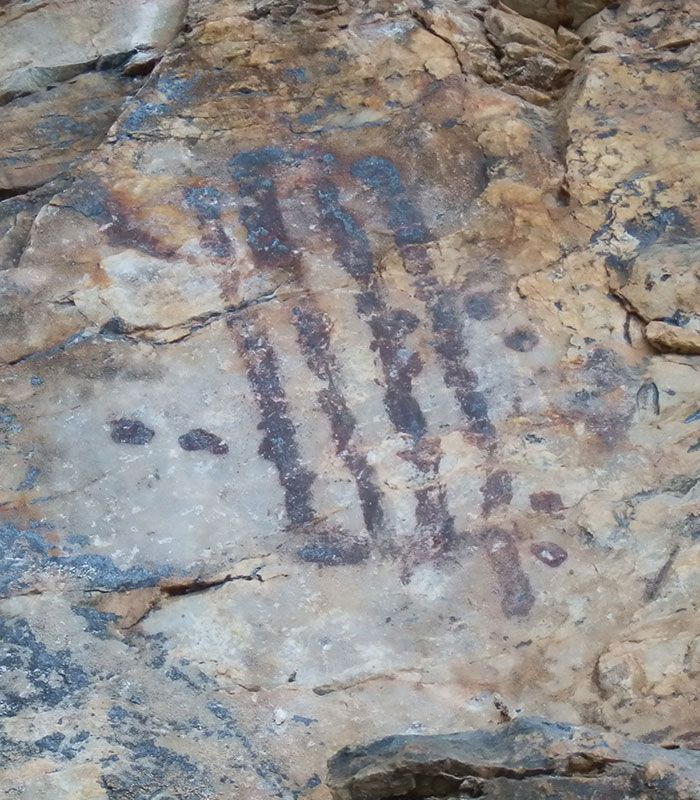Alongside the River Ruecas near the Charco de la Nutria, surrounded by vegetation and in a rugged defile, can be found a shelter adorned by numerous cave paintings which is known as the Cueva de la Chiquita or Cueva de Álvarez. It was the first cave with paintings to be discovered in the province of Cáceres. It is a site associated with a legend of a snake which has been used either as a shelter or as a ritual meeting place for centuries.
In the vicinity of Cañamero, on the defile of the River Ruecas and very close to the Cancho del Fresno Reservoir, lies the cave known as the Cueva de la Chiquita or Cueva de Álvarez. In it can be contemplated over a hundred very different signs drawn on the rock walls. They are classified as belonging to Iberian schematic art dated from the late Neolithic to the end of the Bronze Age and even the start of the Iron Age, between the 4th and the 1st millennium B.C.
As early as 1916 the Abbé Henri Breuil, a pioneer in the study of this kind of cave paintings, was fascinated by the profusion of images of this cave and mentioned it in his classic book Hispanic Schematic Paintings. It was the first cave with paintings to be discovered in the province of Cáceres. The shelter is a large rectangular cavity on a rocky outcrop of the defile. It is not particularly deep as it was formed by the inclination of the quartzite strata and by their erosion.

